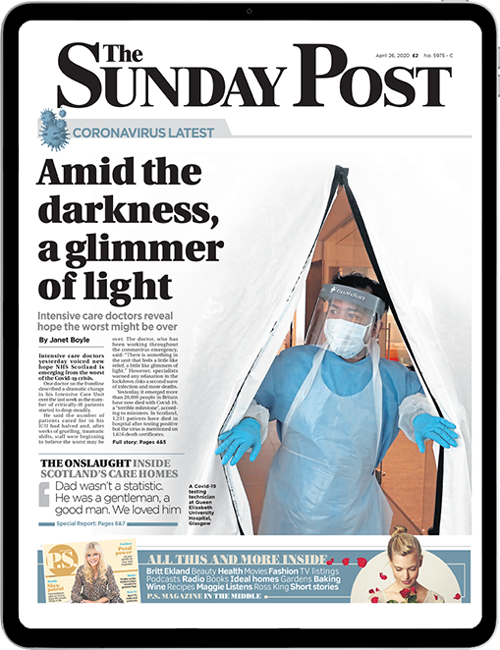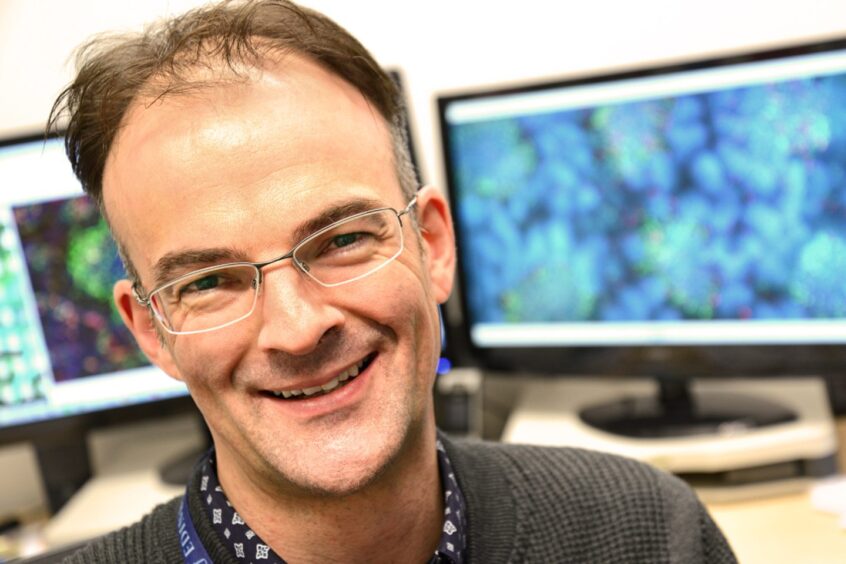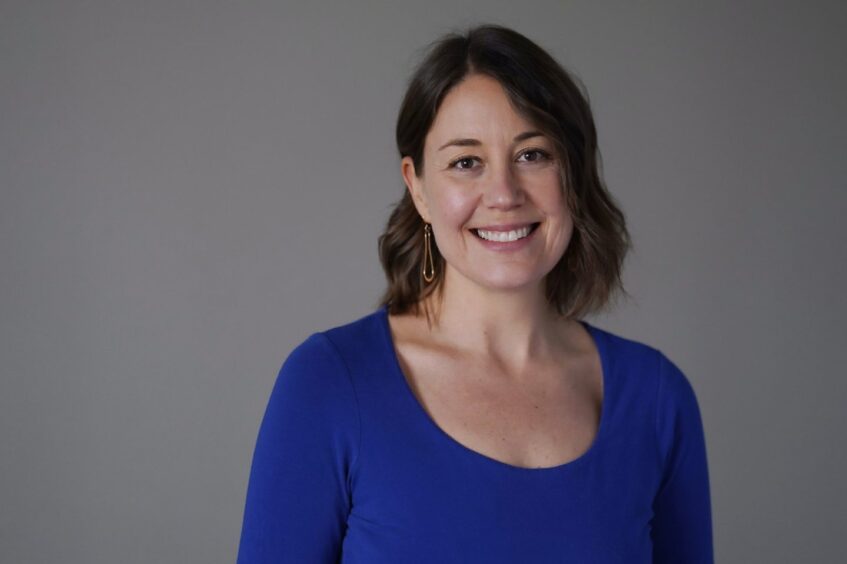
While Scotland is consistently dubbed the “sick man of Europe” due to having the lowest life expectancy of Western European countries, it has – like much of the world – also seen lifespans increase over the decades.
In the 40 years from 1980/82 to 2020/22, Scotland’s life expectancy has grown by more than seven years for men and five years for women.
In mid-2023, the country saw its highest ever number of people aged 90 and over with around 45,550 – a 20% increase in a decade – and around 1,000 centenarians, almost double the figure of 20 years earlier.
Thanks to medical advances, people’s lifespans are increasing. But what of our health-spans – the period of our lives spent healthy and disease free?
“There is a lot of focus on living longer but not thinking of the consequences of that,” said Professor Neil Mabbott, an immunologist at Edinburgh University.
“It isn’t just a case of adding another 10-15 years to everyone’s life – although obviously that would be great – but maybe we’re thinking on it from the wrong perspective.
“Who wants to live longer if you’ll be bedridden, suffering from multiple morbidities and not getting quality extension of life? Yes, you’re living longer but it could be a hellish existence, to put it in simple terms.
“What we should be thinking about is improving the health-span – that period of our lives where we live healthily. If we can improve that, it has a knock-on effect on longevity.”
The figures for life expectancy at older age as of 2021/23 was 19.7 years for females and 17.5 years for males. That means, if you make it to 65, these are the average number of years you’ll be expected to live beyond that age.
The impact of living longer but not in good health can be seen all around us. From a straining healthcare system and so-called bed blockers (because there aren’t suitable provisions set up for people outside of a hospital setting), to the heavy toll on unpaid carers, the implications are far reaching.
Dr Emily Adrion is a health economist researcher and head of the Global Health Policy Unit, a team of social scientists at Edinburgh University committed to addressing health policy challenges of our time.
“Right now, I feel our health systems are not particularly well set up at all and there are a lot of things we can do in policy to change that and to improve on delivery of health care,” she said. “To focus on quality of life in older adults – whether it’s focusing on advanced care planning and really thinking of what a good death would mean, what the end of their life would look like and what their goals are. Shifting away from thinking about length of life to really thinking about quality of life, or both.”
Dr Adrion and Professor Mabbott were part of a panel discussing the issue, called Who Wants to Live Forever?, at the Edinburgh Science Festival earlier this week.
“We’ve known about population ageing for decades,” Dr Adrion continued. “But it moves so slowly that it’s hard to make it a policy priority, so we really haven’t made our health systems resilient so that they’re ready for it – financially but also in terms of distribution of specialist physicians trained in geriatrics that really keep people healthy.
“Policymakers tend to be focused on acute shocks and this issue is more a longer term, slower moving shock.”
Prof Mabbott added: “Governments are looking for more short-term gains than something that would take 10-15 years to put in place, by which point another government is in. No government can guarantee it’ll be in power in five years never mind 15, so perhaps we need all parties coming together. Maybe that’s a pipe dream.”
Public Health Scotland’s (PHS) Burden of Disease study explores the impact on the population over the next 20 years. And while a projected decline in population is expected, disease burdens could increase by 21%. It found that by 2044, diseases like diabetes and strokes could rise by 36%, chronic liver disease by 54% and chronic obstructive pulmonary disease by 54%.
A report published by Dr Fatim Lakha, a consultant in public health medicine at PHS, stated that project estimates are not inevitable, but rather they “provide a window to the future and offer the opportunity for action in the present”. It added: “Focusing on prevention and early intervention to reduce the rate of new cases occurring and the severity of those already living with health conditions is essential to change Scotland’s path.”
Policy changes introduced such as the ban on smoking in public enclosed spaces, minimum unit alcohol pricing, healthy eating campaigns and the child payment programme have all been attempts to not only increase life expectancy but extend health-spans.
But responsibility also has to be placed on the individual, and at a younger age, according to the experts.
“I teach Masters students and it’s hard to convince them to think about ageing now,” said Dr Adrion. “Maybe some of the conversation needs to be focused on the social determinacies of health, how health status and older age really depends on what we do throughout life. A lot of people don’t think about that.
“From my perspective, it’s a combination of individual-level intervention and wider system-level intervention, because even some of the individual level depends on a wider system facilitating these changes. For example, tackling obesity is much easier when there’s access to green spaces to walk around.
“There are lots of things our health systems could do better in ensuring better quality of life in older age, but there are things we can do on an individual level in the meantime.”
Prof Mabbott added: “We can’t rely on society to do everything for us, we have some responsibility ourselves. We’ll still get old, but hopefully we can make that process more enjoyable that what it might be.”
Blue Zones: World leaders in healthy old age
Regions in the world where people live long and healthy lives – often reaching centenarian status – have been dubbed “blue zones”.
These are areas with a high concentration of people living long, healthy lives and with low rates of chronic diseases.
The name is said to be derived from the blue pen used by scientists on maps to mark the areas with long-lived populations. The locations include Nuoro Province in the Italian island of Sardinia and Icaria, Greece.
The concept has been challenged due to an absence of scientific evidence, but it has gained widespread attention thanks to a series of books by author Dan Buettner and his subsequent Netflix series, Live To 100: Secrets Of The Blue Zones.
‘We must look at using AI’
One of the subjects to be discussed by the panel of experts tomorrow evening at the University of Edinburgh is the impact of artificial intelligence on our future health care.
Dr Emily Adrion said: “I think AI has a lot of potential to lower healthcare costs, to streamline care, to take care of a lot of administrative tasks.
“There is the potential to provide the equivalent of specialist care in rural areas. To diagnose people with complex conditions without travel would be amazing.”
Gap growing in Scotland
By Katherine Crawford, Age Scotland CEO
A long life is widely regarded as something to be celebrated. We enjoy hearing about people living into their 90s or receiving a congratulatory message on their 100th birthday and imagine that is the culmination of a life well lived.
But what about the many instances where the later years, or possibly decades, of someone’s life are dominated by ill health, a long-term physical health condition or a dementia diagnosis?
That is the stark difference between life expectancy and healthy life expectancy.
Worryingly, the gap between the two is growing in Scotland. The latest figures, for 2019-2021, show healthy life expectancy for women was 61.1 years and for men 60.4 years. That compares poorly with life expectancy figures of 80.7 years for women and 76.5 years for men.
Healthy life expectancy is lowest in some of the most economically deprived areas of the country – 26 years lower for men and almost 25 years for women.
Years spent in ill health can be among the most challenging of anybody’s life. Everyday activities and hobbies are no longer available, social connections lost, and tens of thousands of older people grow increasingly lonely and isolated.
It is also a time when older people are in greatest need of the NHS and, in many cases, social care. Both services are already struggling to cope with demand and a growing population of people living longer but in ill health will pile on extra pressure.
We can’t all live healthy long lives, but there are preventative ways we can improve our chances of ageing healthily, through accessible exercise, diet, maintaining social connections and keeping our brains active.
Investing resources for healthy ageing in the areas most affected by economic deprivation, providing support to reduce smoking and alcohol intake, can help older people live better. The adage “age is a privilege denied to many” is a poignant truth that highlights the disparity in access to resources and healthcare across different regions.
Closing the gap needs to be a priority when it comes to investment and delivery of health and social care in Scotland.

Enjoy the convenience of having The Sunday Post delivered as a digital ePaper straight to your smartphone, tablet or computer.
Subscribe for only £5.49 a month and enjoy all the benefits of the printed paper as a digital replica.
Subscribe © Supplied by PR
© Supplied by PR © Supplied
© Supplied